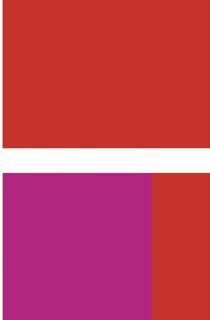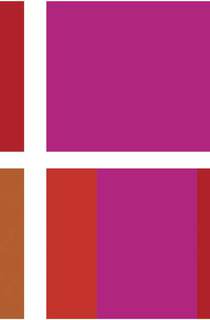Shaping Forms series
We can consider the artwork and the audience as interacting systems that influence one another. We can think of the influence that such systems will have on their audiences. We therefore need to consider computational generative art in open systems terms from the very core of their design.
The works shown in the Speculative Data and the Creative Imaginary exhibition come from my Shaping Form series. They are generative visual works whose behaviour and forms are influenced by the activities detected by a camera. The influence is ever growing and developing. Although responses to movement in front of the works can be detected sometimes, the key influence is on the long term nature of the work. These are the latest works developed out of a concern both with interaction and with time that I have worked on for many years through a wide range of abstract generative forms.
Digital art may be static or dynamic with a totally fixed behaviour but often such artworks, or art systems, interact with the world in some way. These interactions may be with objects that, for example, an art robot bumps into or may be with an audience sensed through image or sound analysis. The most complex interactions are potentially those with the audience, with purposeful enquiring (human) systems. Whilst a concern for interaction in computational art has been with us for a long time, and I first wrote about it with Stroud Cornock in 1970 1, it still deserves careful consideration. What is the nature of such interaction and what is the range of forms that it might take? How might those forms determine the kind of computational mechanisms that are appropriate for the artwork?
Burnham argued for the importance of understanding artworks in their environmental context and that all things ‘which processes art data,…are components of the work of art’[1]. So by that definition, the audience is part of the artwork. As early as 1966, Roy Ascott had developeda theoretical position in which participation and interaction between the audience and the artwork were central. 3 He later gave up the practice of making art objects all together: ‘In California in the 1970s, introduced to the computer conferencing system of Jacques Vallée, Informedia, I saw at once its potential as a medium for art and in 1979 abandoned painting entirely in order to devote myself wholly and exclusively to exploring telematics as a medium for art’. 2 In other art forms, such as Happenings, participation was also prevalent. Kirby described rather basic examples of participation in Allan Kaprow’s Eat thus, ‘Directly in front of the entrance, apples hung on rough strings from the ceiling. If the visitor wished, he could remove one of the apples and eat it or, if he was not very hungry, merely take a bite from it and leave it dangling’. 2
Participation in the artwork by becoming part of the art system and interacting with whatever the artist provided has now become a familiar experience. But what exactly do we mean by interaction? In some respects, with delayed response, as a result of mode change, and even delayed influence on autonomous output in the same way, interaction does not seem an appropriate word to use. Perhaps the words influence, stimulus, interchange are more evocative of this meaning. Perhaps the influence of one system on another could be said to come about as a result of stimulus, interchange or even co-operation and conversation, if we add a layer of meaning to the situation. We may talk about the audience’s influence on an art system where the development of its behaviour is affected by the interactions that it has experienced.
Thinking in these terms, we can consider the artwork and the audience as interacting systems that influence one another. We can consider the development of computational art systems that are open to influence and that develop over time as a consequence. Equally we can think of the influence that such systems will have on their audiences. We therefore need to consider this kind of computational generative art in open systems terms from the very core of their design
No comments yet. Why not add the first?
Acknowledgements & Credits
Acknowledgements
Shigeki Amitani provided technical assistance in the construction of the Shaping Form works shown in the exhibition. The Australasian CRC for Interaction Design supported Ernest Edmonds in his participationin the exhibition.
Credits
Texts: All texts were written by the exhibition participants.
Editor: Pamela Jennings, Pittsburgh, PA (USA)
This work has been republished from the 2007 Exhibition 'Speculative Data and the Creative Imaginary: Shared Innovative Visions between Art and Technology' curated by Pamela Jennings As part of the ACM Creativity and Cognition Conference at at the National Academy of Sciences' headquarters at 2100 C St., N.W., Washington, D.C. The original exhibition catalogue can be found at: http://www.pamelajennings.org/PDF/NAS_Catalog.pdf
Exhibition Sponsors
Office of Exhibitions and Cultural Programs of the National Academy of Sciences presenting a program of exhibitions that explore relationships among the arts and sciences, engineering and medicine.
http://www7.nationalacademies.org/arts/
The 2007 Association for Computing Machinery Creativity and Cognition Conference held in Washington D.C. June 13th – 15th, 2007, exploring the theme of cultivating and sustaining creativity: understanding how to design and evaluate computational support tools, digital media, and socio-technical environments that not only empower our creative processes and abilities, but that also
encourage and nurture creative mindsets and lifestyles. - http://www.cs.umd.edu/hcil/CC2007/
National Science Foundation Computer, Information Science and Engineering (CISE) Creative IT Program, exploring the synergies between creativity and information technology, science, engineering, and design research.
Copyright is held by the author/owner(s) of the text and images reproduced in this catalog


← Back to work
0 Comments